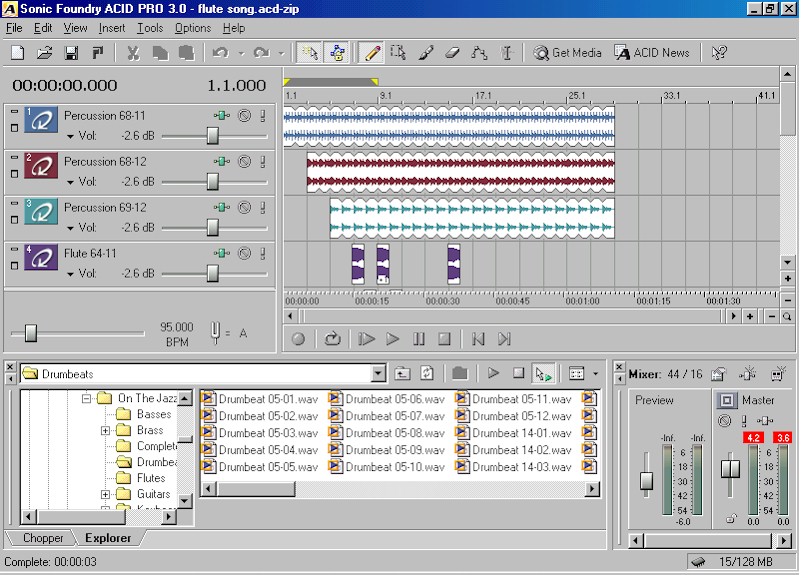
Presentation to the Technology Institute For Music Educators conference April 10th, 2002
by Tom
Zicarelli - Gould Academy, Bethel, Maine
email: zicarelt@gouldacademy.org
abstract
Our music technology curriculum consists of a series of assigned and independent projects. Students publish their compositions to web page portfolios. We encourage students to pursue projects that involve performance, and projects that reach outside the classroom. Our students are generally high school juniors and seniors, although the courses are open to all grade levels. Most of the students have little or no formal musical training or knowledge of standard music notation. For students with prior training in music, we encourage them to use MIDI composition tools and computer based notation software. But in general, we concentrate on teaching the following skills:
The average high school student has listened to thousands of hours of music in his lifetime, but rarely given a chance to apply that knowledge. Our goal is to tap into that vast body of knowledge and give students the tools to apply it. Students are hungry for a creative outlet. The amazing variety and depth of works in our students' portfolios ought to convince any skeptic of the world's vast untapped wealth of youthful musical talent.
This presentation will describe each of the subject areas of our curriculum by giving examples of student works:
Most of the musical examples here are saved in realmedia (real player) format. A free version of realplayer is available at http://www.real.com
The first assignment in the course: Surf the web page portfolios of previous students. This effectively raises the bar each time the class is offered. Peer pressure, competition, and inspiration seem to account for more motivation than I can muster as a teacher.
Students are asked to bring a recording of a piece that they consider to be great music. Examples have included works of artists like Three Dog Night, Tenacious D, Ja Rule, and Van Halen. As a class, we map the form of each piece, graph the dramatic shape, and have the usual arguments about whether or not the music sucks. My goal is to get the students to think as producers, not consumers. And to start thinking about form - the big picture. And to be able to describe techniques that composers use to build excitement in music. This exercise is a condensation of the Listening and Analysis course formerly required of freshman at Berklee College of Music.
Click Here to read an essay by Matthew Fields about dramatic shape
In Maine we have both kinds of music - country and western...
Students generally have more knowledge about style than any other area of music. I usually bring an FM radio into class to demonstrate the point. While wearing headphones, I'll choose a station - then pull out the headphones and play the music on the radio for about one second. In almost every case, students are able to immediately identify the style. And in many cases they will know the artist and the name of the piece. Click on the examples below to test your skills.
Ask yourself - What elements define each style? What are the typical forms in those styles? And how did you get so darn smart?
There are two programs that stand out as indispensable composition tools.
One approach to composing is through sound loops. A loop is a chunk of sound, or a musical phrase. Software like Sonic Foundry's Acid Pro allows you to arrange and organize many tracks of loops, and any other recorded sounds, into compositions. Its like building with Lego, or plywood. Where do loops come from? Anywhere that you can find sound. For their first projects students use loops from commercially available sound libraries.

Acid Pro 3.0 screen shot
Here are several examples of student works, composed using Acid Pro:
The next logical step in loop-based composition, is to make your own loops and sounds - probably an easier task than making your own plywood. To work with sounds, you need an audio editor. Sonic Foundry's Sound Forge is to sounds as Microsoft Word (tm) is to words.
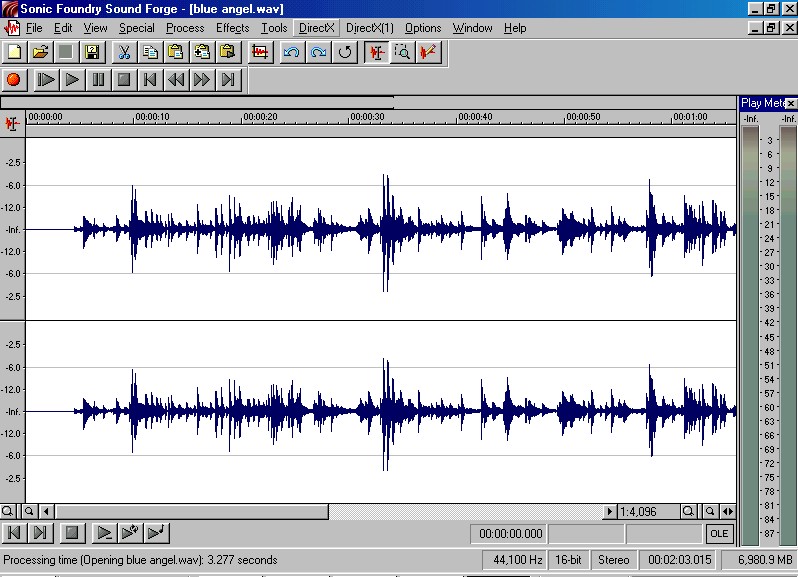
Sound Forge 5.0 screen shot
Loops may be recorded live or sampled from previously recorded works. Classical musicians call this process Musique Concrete - a genre fathered by Pierre Schaeffer in the late 1940's and popularized by the band Negativeland. Here are several examples of student works composed using Acid Pro, with loops created by students:
Occasionally a student comes along who surprises you with amazing hidden talent. Greg Bryant created a series of beat-box percussion loops using only his voice and a microphone. Here are several examples. (realmedia files)
Acid Pro also functions as a multi-track audio recorder. One of the most effective and challenging assignments for students has been to write lyrics and then create music to go with them. Thanks Dave Bean.
Here is an example:
Students are also asked to create radio advertisements. Unfortunately, most of results are not appropriate for public consumption. Topics have included, terrorism, butt reduction surgery, the morning-after-pill, human insecticide, beer, condoms, and so forth. Need I continue? Here are a few less offensive examples
Here is an example of music played on turntables, combined with Acid loops:
Here's an example of a multi-track recording, in which voices were recorded individually, without synchronization, and then put together in Acid Pro, by cutting and pasting:
Pattern sequencing software simulates hardware based groove-boxes which have dominated the techno genre over the recent decade. Image-Line Software's Fruity Loops (named after my second favorite cereal) is an excellent example of a pattern sequencer.
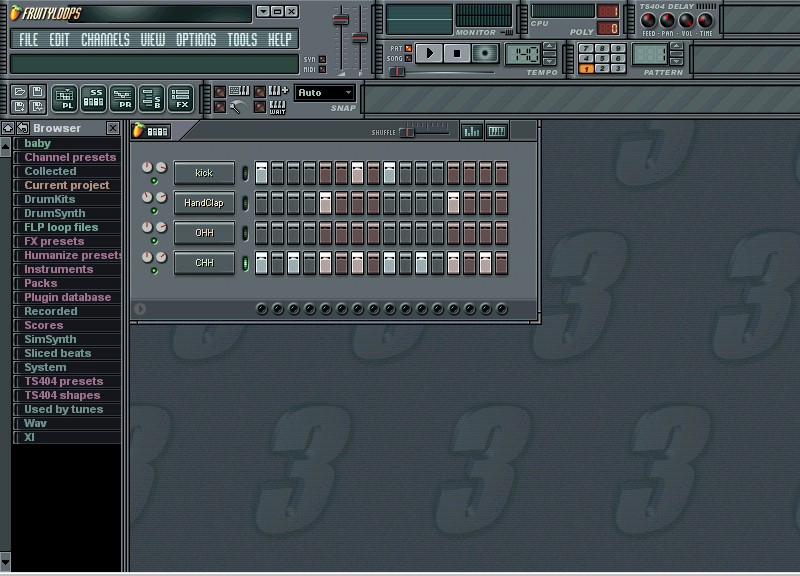
fruity loops 3.4 screen shot
When people don't know any better, they have few qualms about trying things that no one in their right mind would consider. This is where composition enters the realm of magic. Here is an example of a piece by Burt Boyer, in which he actually fits a drum pattern to an A Cappella rap. Then he adds MIDI keyboard, and some turntable wizardry using an ancient Sesame Street record.
Question: How do you get a guitar player to stop playing?
Answer: Put a piece of music in front of him.
Mixman Studio from Mixman Technologies is a remarkable program that allows a musician to arrange up to 16 sound loops (samples) and trigger them from the computer keyboard in real time. The tempo, pitch, volume, and an array of effects can also be controlled while the music is playing. It allows real time composition - which is the essence of improvisation.
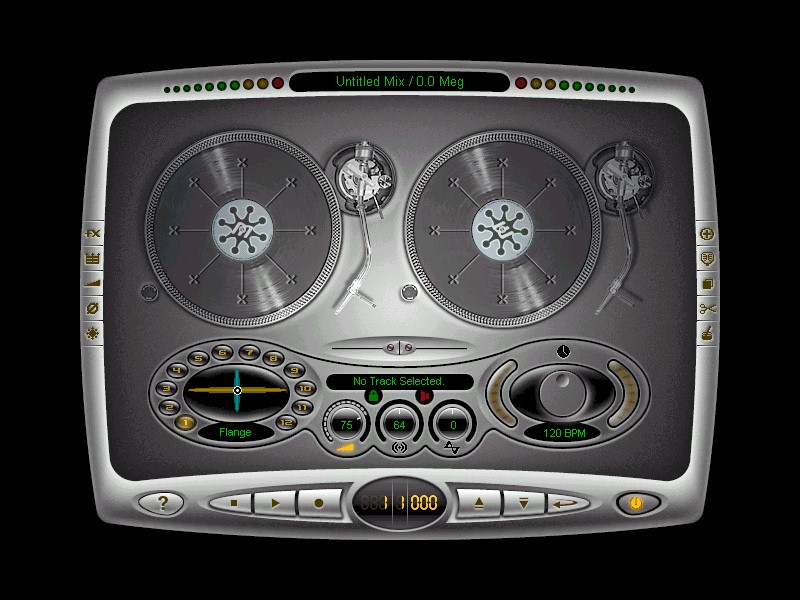
mixman studio pro 4.0 screen shot
Mixman comes with preprogrammed groups of sounds in various styles - like disco, hip-hop, country, etc., Being a tyrant, I will not allow students to work with these palettes of sounds. They are required to find their own combinations of sounds, practice a bit, and then perform a live mix. Here are a few examples:
There are two basic approaches to combining music and images - film scoring (pictures first) and music-video production (music first). We use Sonic Foundry's Videofactory software. It is not the most advanced video editing program, but it is powerful and extremely easy to learn. We don't have the resources to provide camcorders to all of our students, so we rely on images found on the Internet to create film projects. The Internet becomes their camera. We do have one camcorder available for students who wish to shoot their own footage - but many students prefer to work with found images.
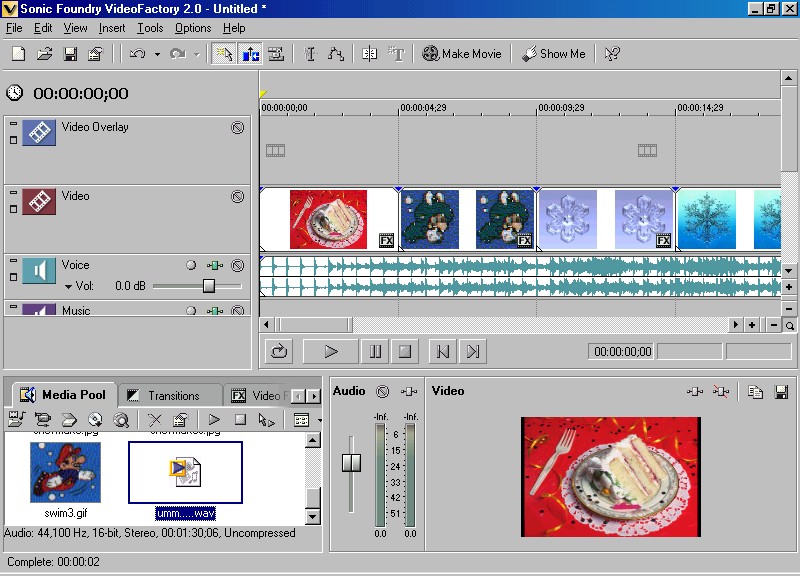
videofactory 2.0 screen shot
Here are several examples of multimedia productions derived from the Internet:
Here's an example of a short feature film, promoting our school:
Here's an example of a piece composed using a MIDI keyboard and Cakewalk pro audio. The music was then scored in Coda Music's Finale, and given to live musicians to perform.
All of the examples you have heard here are contained in student portfolios at http://music.gouldacademy.org
We use Microsoft's Front Page software to create web sites. Its very similar to using a word processor - but students learn to render their compositions in a streaming format (realmedia), and to create hyperlinks.
Here are several examples of great looking web portfolios:
Web page development is probably the most important thing we teach. If a student goes on to become a professional composer, he will at least have one skill which will allow him to make a living.
Question: What's the difference between a pizza and a musician?
Answer: A pizza will feed a family of four
Isn't it strange when headings have nothing to do with the content? Some general observations: The abstract for this presentation was misleading - working with this software doesn't inspire mass numbers of students to start taking piano lessons - but it certainly motivates them toward increasingly bold creative efforts with new tools and non-traditional skills. And they develop considerable skills with the most valuable tools - their ears.